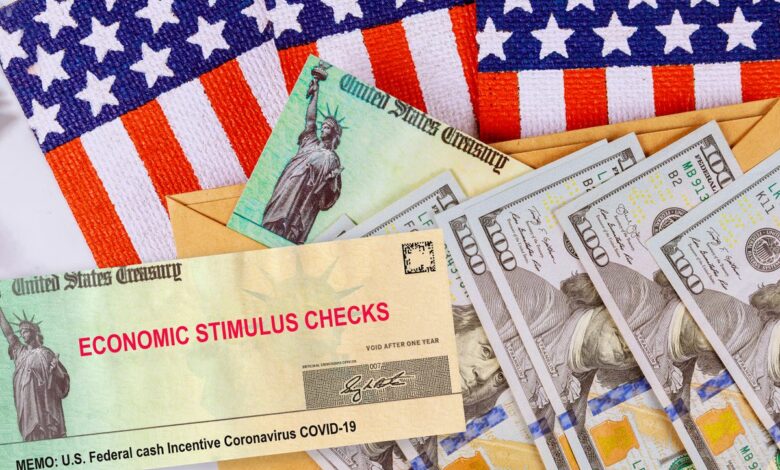America’s stimulus blockbuster has its own effects on the global value of the US Dollar

If you look at the title of this article, it makes you question so many things- why is the stimulus being called blockbuster? Is it affecting the dollar positively or negatively? Why is it even important? Well, hold your curiousness because you’re in for a very interesting ride. But before you sit on the ride, you need to know why it is even there, right? Well, let’s start with a little backstory to answer that question first. The advancement of 2021, the year expected to bring some stability after 2020 ruined the majority of the conventional business sectors across the world, brought with itself a declining pattern in the dollar as a lot of people were looking to sell their stock of the US dollar that they hoarded last year. Yes, you read it right. People hold dollars or any other currencies just the way they invest in equity, debt or bond markets.
Well, why did they hoard dollar, you ask?
It is because even during the coronavirus pandemic, the dollar was declared a safe bet by investors. The economic and political stability in the United States along with the fact that the currency is comparatively very less volatile as compared to its other market counterparts are some of the major contributors to the currency being considered a safe asset by investors across the globe. Statistically speaking, more than 1.8 trillion US dollars were in circulation around the world during the pandemic year. Thus, with things easing into the new normal, people are selling their hoards, leading to a downward trend in the dollar value.
Why is the US dollar considered a safe bet?
Now, with the dramatically upward-facing forecasts for the positive growth of the Gross Domestic Product (GDP) in the United States, there are expectancies of higher interest rates in the market. It is a good sign for the currency, painting a picture for the stronger dollar. However, this picture of a stronger dollar has one other prerequisite along with the US doing well, it is that the other economies must do badly. This means that as long as the US doesn’t stand out from the hoard of other bad performers, it won’t be able to witness the upward consistent trend. This roots from the fact that the current requirement after the people’s will to sell the dollar would come to a halt only if the US dollar continues to be the safe bet. So, this strong dollar story is a little different from the otherwise really strong dollar story. Let’s understand why, through the basics.
Think of this story as a not so common one. Note the fact that usually, the upward and downward trend in currency values take place because of trade inflows and interest rates, which tells our usual story. However, one other factor that affects the currency value and can overwhelm both these parameters is the risk appetite– a not so common story. During the pandemic as the lockdown struck, the demand for cash hyped through the roofs, and in particular, so did for the dollar, as explained why. This was the case of change in people’s risk appetite in a situation as rare as a pandemic. Then, as risk appetite revived, the dollar started declining. This was the cause for the different story. Now, the currency’s upward trend that is witnessed currently comes from the interest rate differentials. More specifically, the recovery-oriented stimulus announced by the United States government brought in growth expectations for the economy of the United States as well as all other developing of developed countries having trade ties with the US. The growth expectations further resulted in bond yields responding to it, reflecting signs of increased short term interest rates. Increased interest rates of the domestic economy intrigue foreign investors to invest in the country, contributing to capital inflows, which is good for the value of the domestic currency, in our case the dollar.
Now, as mentioned, to sustain the bearish outlook of the dollar would require other economies to perform badly while the United States is performing well. The latter is being covered by the United States government but for the former, the news seems to be not so bad after all. It is because if you look at Britain, the economy is still crashing and struggling to get back up. However, the successful vaccination drive of the country explains the rising value of the pound. The low-interest rates in Japan present a similar outlook for the yen too. For the big oil-producing countries, however, rising old prices have led to an increased value of the currency. Such countries are Canada and Norway, amongst others. As a result of all this information given, the dollar is further expected to rise in the near term. The reduced risk appetite after the pandemic makes it even more tempting or investors because of its tendency of being the least volatile asset to invest in, especially in the current times.
However, later in the year, the possibility of a mildly weaker dollar cannot be denied. It is because with Asia doing well and Europe expected to pick pace after the vaccination drive, it would lead to wider trade transactions, spurring activity in the world. This would also help revive the investor risk appetite and the funds can be seen directing to other areas as well. “When the United States is doing well, and also bringing the world with it, there are more interesting places for investors to put their money,” as put by Mr Juckes, an analyst at an equity bank. So, with this scenario, we can very well expect the dollar to take a weaker position- where it grows because of the increasing interest rate in the United States and falls because of the broad global growth along with wider trade trend. What twist this story would have is yet to be seen, especially because the COVID 19 pandemic has left no stone unturned in keeping us on our toes for what is coming next. The next episode of the valuation of the US dollar shall be aired soon by the federal reserve.




